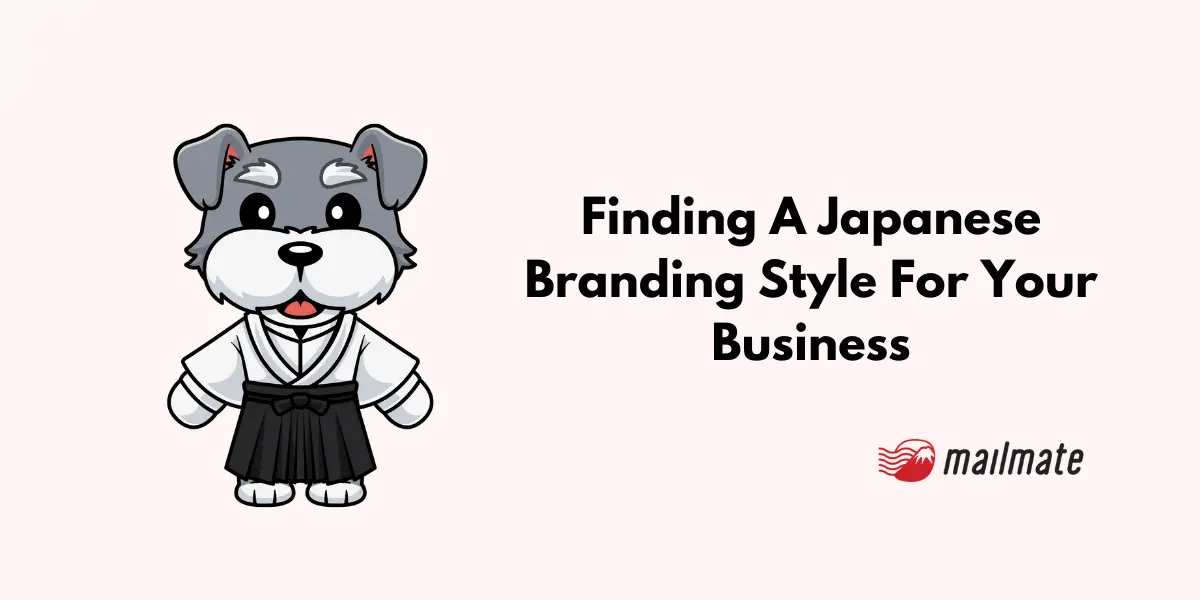Finding A Japanese Branding Style For Your Business

Branding is everything. Creating a distinct brand identity is crucial for your business to succeed around the world, especially in Japan.
Here, we cover everything you need to know about finding the Japanese branding style to help your team.
Understanding Japanese consumers
Understanding how Japanese consumers think is essential to know where your brand should stand in the Japanese market. There are two key elements you should know:
1. Respect for the materials
According to Statista, Shintoism is the largest religion in Japan at 70.5%, and Buddhism is the second largest religion in Japan at 67.4% in 2019.
In Japanese Shintoism, there is a concept of respecting all items because of a god or kami in them. Additionally, Japanese Buddhism has mottainai, which encourages mindfulness of material goods and using resources wisely.

Thus, both these religious concepts have influenced how items are made, the materials, and the level of craftsmanship labored in the production.
At the same time, there is a higher expectation for these item qualities to ensure the items are long-lasting and worth the Japanese consumer’s time and money.
2. Bandwagoning
Take a look at who is your target audience. No matter who they are, they’ll tend to bandwagon on what’s popular for them. After all, if everyone has your service, then it must be good.
This consumer behavior is part of a collectivist mindset in Japan, where people are more group-oriented and will follow the crowd.
To help Japanese consumers hop onto your bandwagon, you should add testimonies, reviews, and ratings to vet your product and service.
How to build a stronger brand identity in Japan
Branding is everything to your business when it comes to first impressions.
To help your business create a stronger brand identity, this section covers the design of your brand to the Japanese cultural influences of any business’s branding.
Visual branding key features
What makes a brand memorable or iconic? We know the iconic golden arches for McDonalds or the double-tailed mermaid for Starbucks.
Here, we break down how to position your brand visually.
1. Color palette
Colors have different meanings between cultures and countries.
A research found that Japanese consumers prefer bright and saturated light colors rather than desaturated warm colors.
Additionally, knowing what colors go together enhances your brand's visual appeal and memorability.
For example, the brand THREEPPY is known to have more pastel dishware that goes well all together.

2. Language and font
Similar to English’s font, text, and typography, Japan has something similar. Do you want something in cursive, handwritten, stylized, or standard?

If your brand is difficult to read, people will have a harder time identifying your business.
Additionally, do you want your brand to have an English name with Japanese katana pronunciation? This option makes your brand stand out, but risks isolating potential Japanese consumers.
Instead, many businesses use the third option to help their branding designs.
3. Image or mascot
Your business is not just your name. There needs to be something that ties everything together for your branding. The overall image or a mascot helps bring everything together.
Let’s take a look at Ichiran ramen in Japan.

Even if you can not read the kanji for Ichiran (一蘭), you can still identify them by their color palette. Many similar Japanese brand names do something similar when it comes to their product.
Additionally, consider creating a mascot to represent your business, such as Fujiya’s Peko.

@fujiya_jp
Japanese branding style key features
Many branding styles in Japan are influenced by its traditional values and that can be still seen in my brands in Japan today.
1. Harmony
In Japan, there is a concept of “wa 和” or peaceful unity within society.
So in terms of Japanese branding, businesses do not put down their competition. Running advertisements against your competitors is seen as underhanded.
Instead, it’s best to keep things civil and focus on improving your brand’s prescription to the market.
2. Simplicity
Also known as kanso, many Japanese businesses will try to take a simple, almost minimalist approach.
While that may be the opposite of some Japanese websites that want to give you all the information at once, sometimes the simplest thing in life is the most extraordinary.
3. Seasonality
Seasonal changes, also known as kisetsu, are big in Japan. Many brands will incorporate the changing season into their products and packaging as part of a limited-edition or themed advertisement.
This feature creates an urgency to have the current item as it is while the season lasts.
So if your budget allows you, change up your product or offer a discount for the season.
4 successful Japanese branding strategies
Many foreign companies used these 4 aspects to be successful in Japan.
1. Storytelling
Who doesn’t love a good backstory? Japanese consumers will engage with brands' stories that revolve around traditional values, meticulous craftsmanship, or a connection to the local culture.
Many foreign brands struggle with their brand narrative because it doesn't match the Japanese cultural background.
So, it’s best to look into which Japanese stories can help boost your storytelling in the Japanese market.
2. Packaging and design
Many successful brands in Japan have a minimalist, simple, and almost elegant design that conveys a sense of sophistication.
For example, Muji's product packaging design complements its focus on 'less is more' for functionality, quality, and sustainability.

Their simplicity and functionality is a major appeal to Japanese consumers.
3. Social media and digital marketing
Social media and digital marketing have played a major role in sharing information and gaining new audiences.
Using popular Japanese social media platforms, such as LINE and Instagram, as part of your marketing strategy builds your brand awareness online to new potential customers.
Many brands will collaborate with Japanese influencers and celebrities with affiliate links or promotional deals.
4. Building relationships
Whether it’s building a relationship with your customers or partners, investing time in them shows loyalty and commitment.
Many actions will include customer service, engaging on social media, or sending thank-you gift baskets.
Additionally, networking at conferences or events is an opportunity to connect with others and showcase your business and brand.
2 unsuccessful branding examples
Let’s take a look at a couple of examples of branding failures in Japan.
1. Pampers storks
For example, Pampers marketing in Japan used a stork to associate with its baby products. However, storks aren't in Japanese folklore with babies. Instead, it’s a peach to match the story of Momotarō or a bamboo to match the Kaguya-hime story.
Taking the time to look into Japanese local culture will help your brand stand.
2. McDonalds Sweet Pie

@Kotaku
In 2020, McDonald's Japan advertised its Belgian Chocolate and Sweet Fromage pie. However, the direct translation for 大人のクリームパイ would be “Adult Cream Pie,” a very suggestive connotation in English.
Lost in translation, unintentional associations, and misinterpretations are all here in this branding.
But with thorough language research, your business can avoid this mix-up.
Protecting your brand in Japan
Your brand logo represents your business in Japan. If someone steals or misuses your logo, it will reflect poorly on your business.
Thus, protecting your brand’s image is crucial to maintaining your appearance in the Japanese market.
There are 3 methods to do so.
1. Trademark registration
Getting a trademark in Japan from the Japan Patent Office (JPO) will protect your logo and brand name. It will also deter and prevent businesses from creating a similar brand logo.
2. Copyright protection
Registering with the Japan Copyright Office protects original creative works such as books, art, and music.
Having copyright protection prevents other companies from misusing your brand image.
3. IP enforcement
Intellectual property (IP) in Japan can be protected by lawsuits or civil proceedings according to The Enforcement of the Intellectual Property Rights in Japan by the JPO.
In closing
Establishing a Japanese brand style for your business helps situate yourself in the Japanese market. Looking at successful strategies and adjusting your branding strategy to adapt to the Japanese business environment.
Spending too long figuring out your Japanese mail?
Virtual mail + translation services start at 3800 per month. 30-day money-back guarantee.

